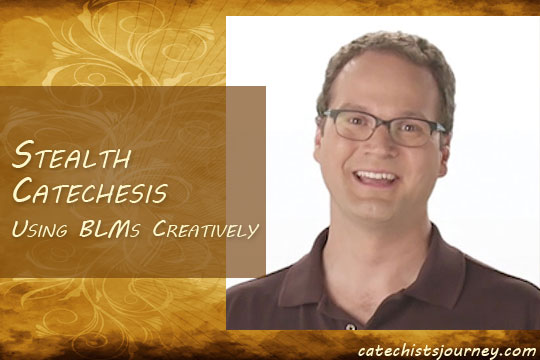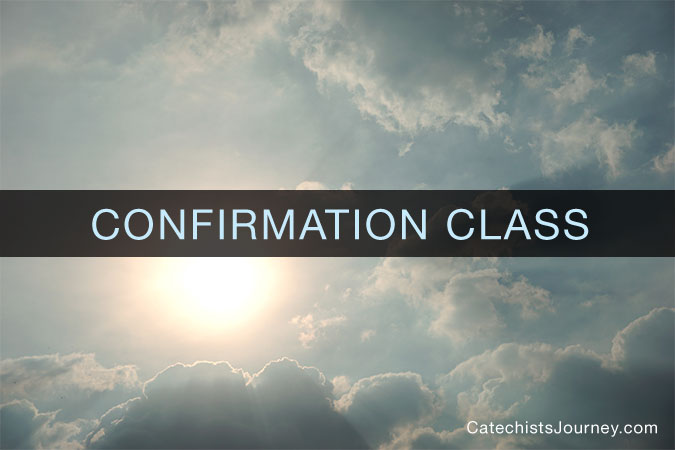
One evening, my 10th-grade Confirmation class revolted.
“We do not want to use the book anymore,” said their leader.
“Why not?” I asked.
“We’ve been in school all day, and we’re tired of sitting around listening and reading. This is supposed to be church, not school.”
I could see her point. After all, I had been working all day, had gone straight to the church from the train, and I had yet to eat dinner. I understood being tired. Besides, the Catechism is not algebra. As Pope Francis said, “The catechesis, as a component of the process of evangelization, needs to go beyond the simple realm of scholastics, in order to educate believers, beginning with children, to encounter Christ, living and working in his Church” (Address to the Pontifical Council for Promoting New Evangelization, 29 May 2015).
But I wasn’t going to abandon the textbooks. We were using Confirmed in the Spirit. I was familiar with the content; the parish had invested in it; and when used with the Called and Confirmed DVD, this robust program provided the resources that would prepare the young people for encountering the Holy Spirit in the Sacrament of Confirmation, help them discover how the Holy Spirit is active in their lives, and help them see how the teachings of the Church will help them.
What was I going to do? How was I going to use the book without using the book? Simple. I was going to disguise it.
The following week’s lesson was on the Gifts of the Holy Spirit (Confirmed in the Spirit, Chapter 5). I decided that I would start with the Blackline Master (BLM): The Gifts at Work. I set up a station for each Gift of the Holy Spirit; at each station I placed a Confirmed in the Spirit book, a sheet of poster board, markers, and the section of the BLM addressing one of the gifts. I explained that each station was dedicated to one of the Gifts of the Holy Spirit. On the poster at each station, I asked the young people to:
- Write the name of a person who has this gift.
- Explain how that person uses this gift.
- Write how they can use this gift as young people.
They were confused at first. “How do we know what the gifts are?” they protested. I told them to refer to the book and the BLM. I divided them into groups of three, and with each group starting at a different station, I set them off. After five minutes at each station, I had them switch.
After each group had visited all seven stations, we came back together and I asked them, “Of all seven gifts, which gift do you feel like you need the most at this time?” A great discussion followed, and I explained that God gave us all these gifts at our Baptism, and at Confirmation, the Holy Spirit strengthens us in those gifts so that we can follow Jesus more closely.
After we ended class with closing prayer, I asked the young people, “So, how did this work for you?” They loved it! “I learned so much,” one of them said, “but it didn’t feel like I was being taught anything.” The rest of the class concurred.
Indeed. When we let the Holy Spirit guide our catechesis, then we will teach young people without teaching.
How do you adapt to the needs of the young people in your class? How might you teach the content of your lesson so that young people don’t feel like they are in school?




Great blog post, Bob! You really hit it out of the park with this idea. You kept your class engaged and they learned something. I can’t wait to read more of your ideas.
OK, I give up. What’s a “BLM”? Surely, not the Bureau of Land Management or Black Lives Matter!
Padrina, it’s a blackline master. Thanks for asking us to clarify!
I’m new in teaching young children ages from 6-7 years. Can I someone please guide me in this. How do I go about. Thank you
Hi Anna and welcome to teaching 6-7 year olds! Feel free to contact me at Paprocki@loyolapress.com and I can offer some suggestions to you about getting started in your ministry.
Thank you, God bless